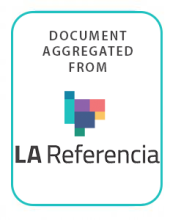Land Library Search
Through our robust search engine, you can search for any item of the over 73,000 highly curated resources in the Land Library.
If you would like to find an overview of what is possible, feel free to peruse the Search Guide.
/ library resources
Showing items 1 through 9 of 22.The Voluntary Guidelines for the Responsible Governance of Tenure of Land, Fisheries and Forests in the Context of National Food Security (or VGGT) is the first global document that addresses policy, legal and organizational frameworks that regulate tenure rights.
In 2014-2015, the Asian Farmers Association for Sustainable Rural Development (AFA) implemented a project entitled “Popularizing the VGGT Among Small Scale Farmers Organizations, Relevant National Government and Inter-governmental Organizations” with the support of the International Land Coalitio
El presente trabajo intenta describir brevemente la situación del derecho al agua en nuestro subcontinente.
The Association of Southeast Asian Nations (ASEAN) has been trying hard to go into free trade agreements (FTAs) with different countries. It believes that this will increase trade and help members sell their export products to more markets in other countries.
La expansión acelerada de las áreas urbanas no es algo nuevo para las ciudades latinoamericanas.
Este artículo evalúa las diferentes reformas agrarias en Colombia desde comienzos del siglo XX. Muestra los aciertos y desaciertos de la Ley 200 de 1936.
Desde el inicio de la ocupación española, el Camino del Sur, último tramo de una red a escala continental, constituyó la vía de comunicación entre la ciudad de Buenos Aires y el pago de la Magdalena a la vez que en sus proximidades se originaban incipientes núcleos urbanos.
In Latin America, water governance is facing the problem of rising demand for water resources, increased hydrological variability in a context of climate change, proliferating contamination and thus —in general— increasing scarcity of water in terms of quantity, quality, and opportunity.
El análisis de las transformaciones en el paisaje generadas por la expansión urbana de Cuenca, se realiza a través de una revisión de la historia de la ciudad, para poder obtener una visión sobre su futuro; es decir, qué hicieron nuestros antepasados en esta región, qué estamos haciendo nosotros




